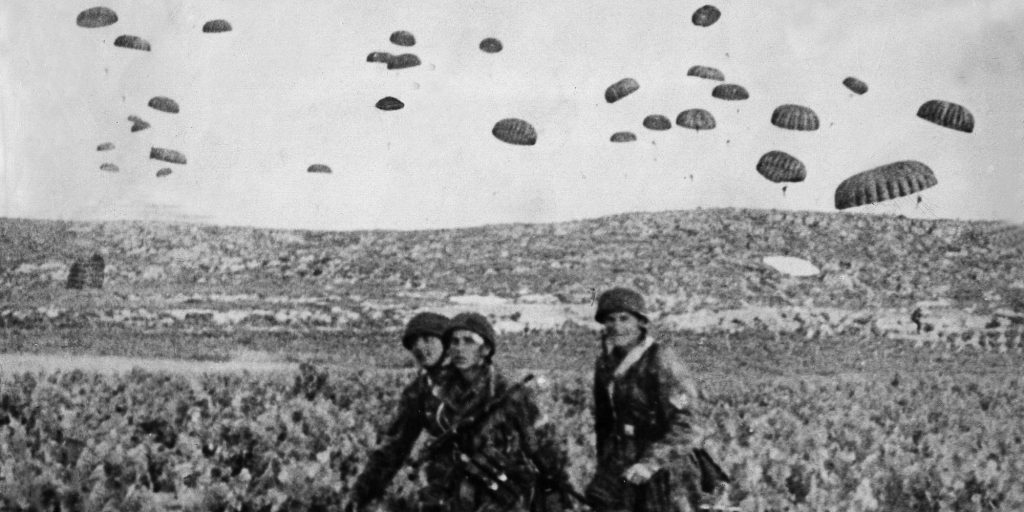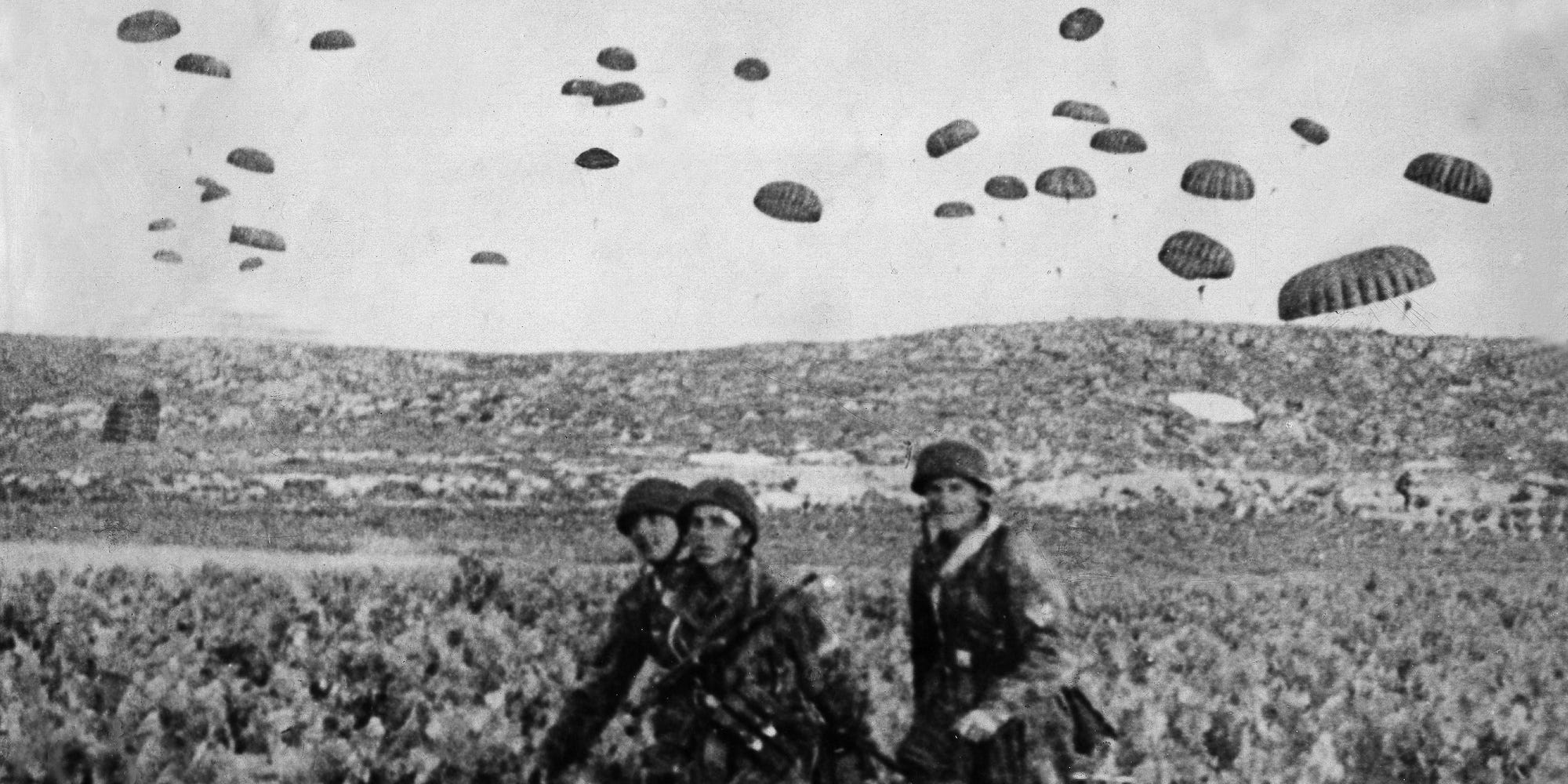
ullstein bild/ullstein bild via Getty Images
- The German invasion of Crete in May 1941 was the first major invasion led by paratroopers.
- It was a costly victory for the Germans, which led Hitler to dismiss such operations in the future.
- But the Allies saw the importance of paratroopers and invested heavily in their use during the war.
- See more stories on Insider's business page.
Early on May 20, 1941, thousands of German paratroopers, known as Fallschirmjägers, in hundreds of transport planes and gliders were preparing to assault the Greek island of Crete.
It was the first time a large-scale invasion was spearheaded almost entirely by paratroopers. The battle was the final part of the Axis invasion of Greece, and on paper, the numbers favored the Allies.
Germany's 22,000-man invasion force was up against a combined British Commonwealth/Greek force of about 42,000, the Royal Navy was much stronger than its Axis counterparts in the Mediterranean at the time, and the only way Germany could win was by capturing Crete's three airfields with Fallschirmjägers.
British intelligence knew this before the battle and told the commander on the island, Maj. Gen. Bernard Freyberg. When the Fallschirmjägers landed, they encountered intense resistance, but after a brutal 13-day slog, the Germans took the island.
The victory came at a huge price for the Fallschirmjägers – so much so that Hitler soured on large-scale airborne operations, remarking that "the days of the parachute troops are over."
The Allies, meanwhile, learned the complete opposite lesson.
A costly victory
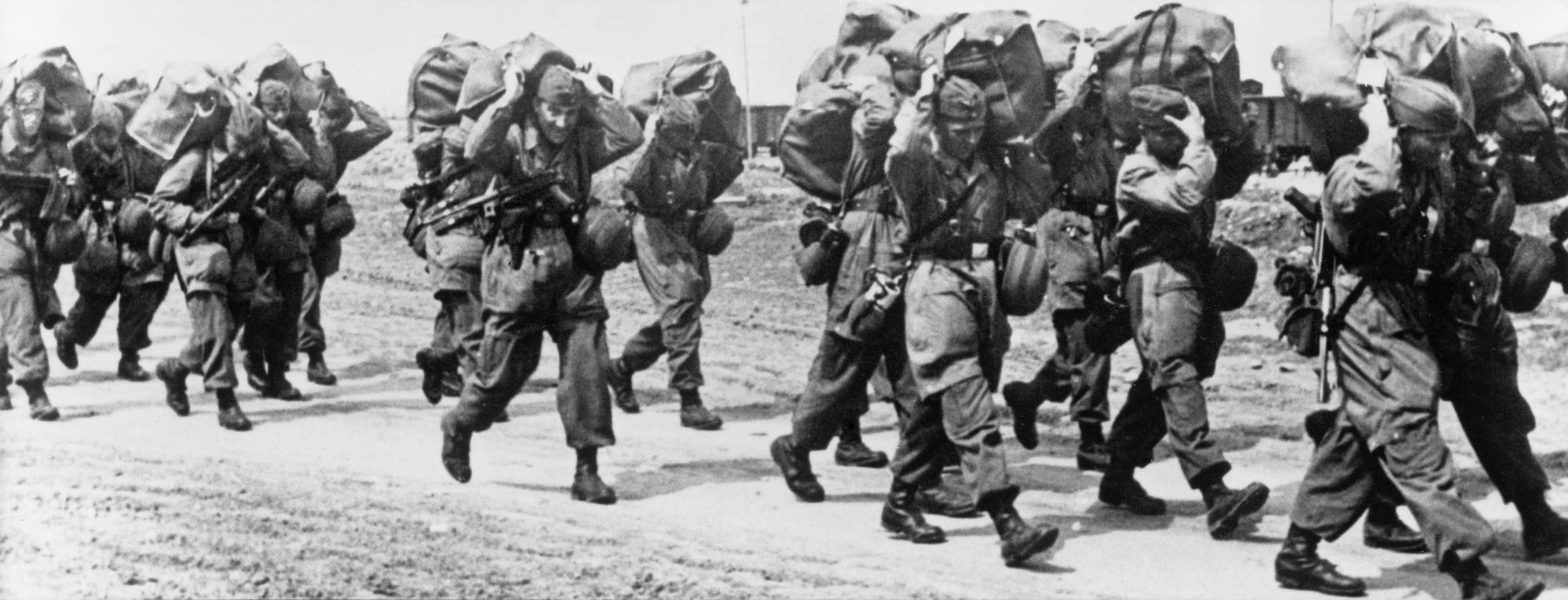
ullstein bild/ullstein bild via Getty Images
By the time Crete was invaded, the Fallschirmjägers had earned a reputation as elite soldiers, having assaulted air fields and strategic positions in Denmark, Norway, the Netherlands, and Belgium.
At Crete, they would seize the island's three main airfields, whereupon the rest of the invasion force would be airlifted in. Small amphibious landings were also planned, but the airfields were the prime objective, making the Fallschirmjägers the key to victory.
But the German victory at Crete was due as much to Allied communication and leadership failures as it was to the skill of the German paratroopers.
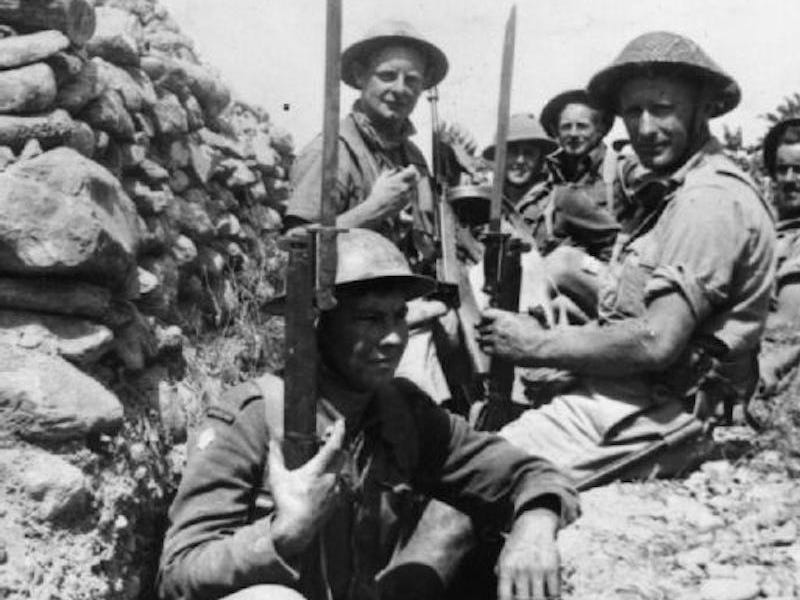
Imperial War Museums
Freyberg was convinced that the real German invasion would come from the sea and positioned most of his forces along the coasts, neglecting to properly defend or sabotage the airfields. Even when the airfields were under attack, Freyberg refused to commit his reserves to their defense.
Capturing the airfields was still difficult and costly for the Fallschirmjägers- only one of the three was taken, and only after high German casualties.
When the battle was over, Germany and Britain had both suffered over 3,000 killed.
About half of the British losses came from the Royal Navy, which lost eight ships to Luftwaffe air attacks. The Germans also lost 146 aircraft (mostly transports) destroyed and had another 165 damaged.
Inferior airborne equipment
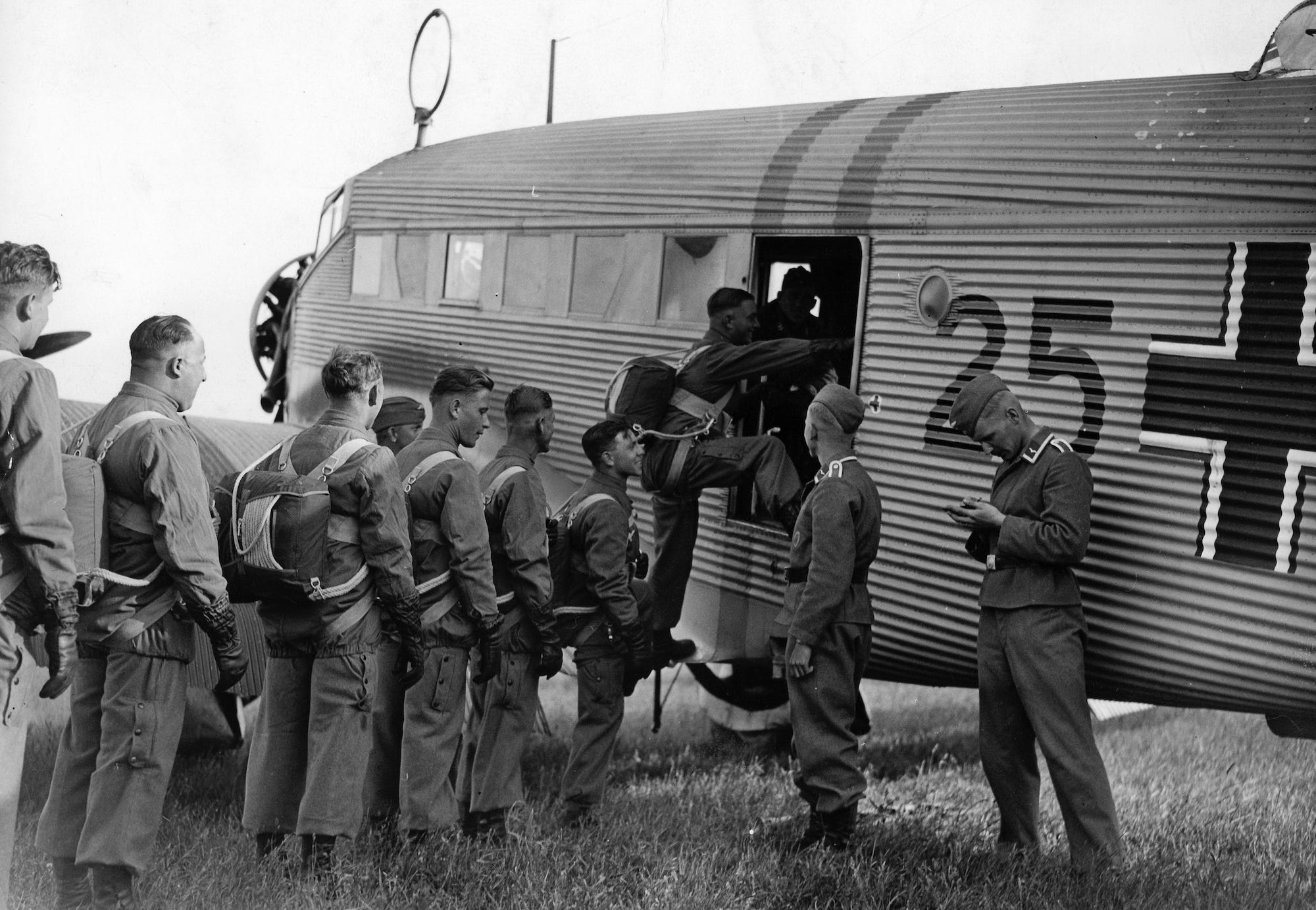
Heinrich Hoffmann/ullstein bild via Getty Images
A major reason Fallschirmjäger losses were so high was their equipment. German parachutes were based on an old Italian design and didn't have risers, which meant Fallschirmjägers could not steer or change course in the air and had no control over where they landed.
The design of German parachutes also tended to force Fallschirmjägers into hard landings at dangerous angles, increasing the chances of fracturing or breaking bones far higher than those of Allied paratroopers.
German parachutes also did not have a quick-release system, which meant they could drag German soldiers along the ground if caught in high winds before they were fully detached, or leave them stuck for longer periods of time if they landed in trees.
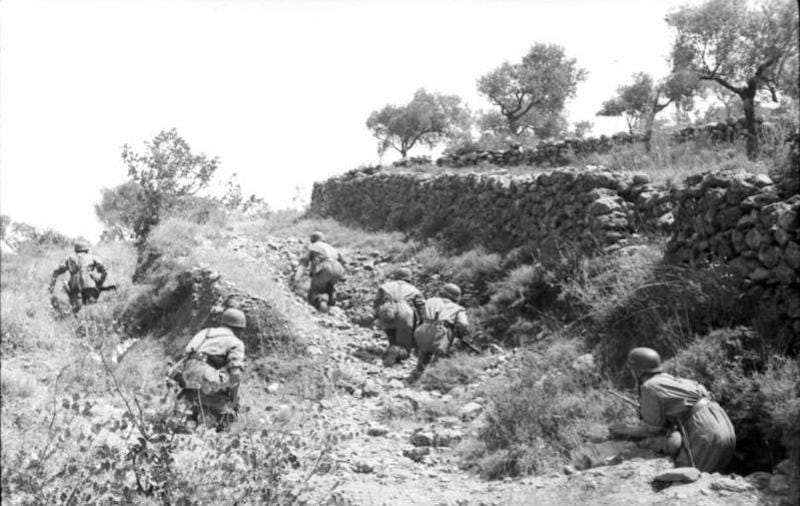
German Federal Archives
Finally, because they jumped at lower altitudes than Allied paratroopers and had poor parachute setups, almost all Fallschirmjägers jumped without their primary weapons, carrying only pistols or knives. Instead, their armaments were dropped in canisters that the paratroopers had to retrieve once on the ground.
These defects had disastrous consequences for the Fallschirmjägers at Crete. Many were killed before they even had a chance to fight.
On a number of occasions, Cretan civilians swarmed and killed Fallschirmjägers who were stuck in trees or didn't have guns. Such widespread civilian resistance was a first for the Germans, and led to many reprisal killings after the battle.
Lessons learned
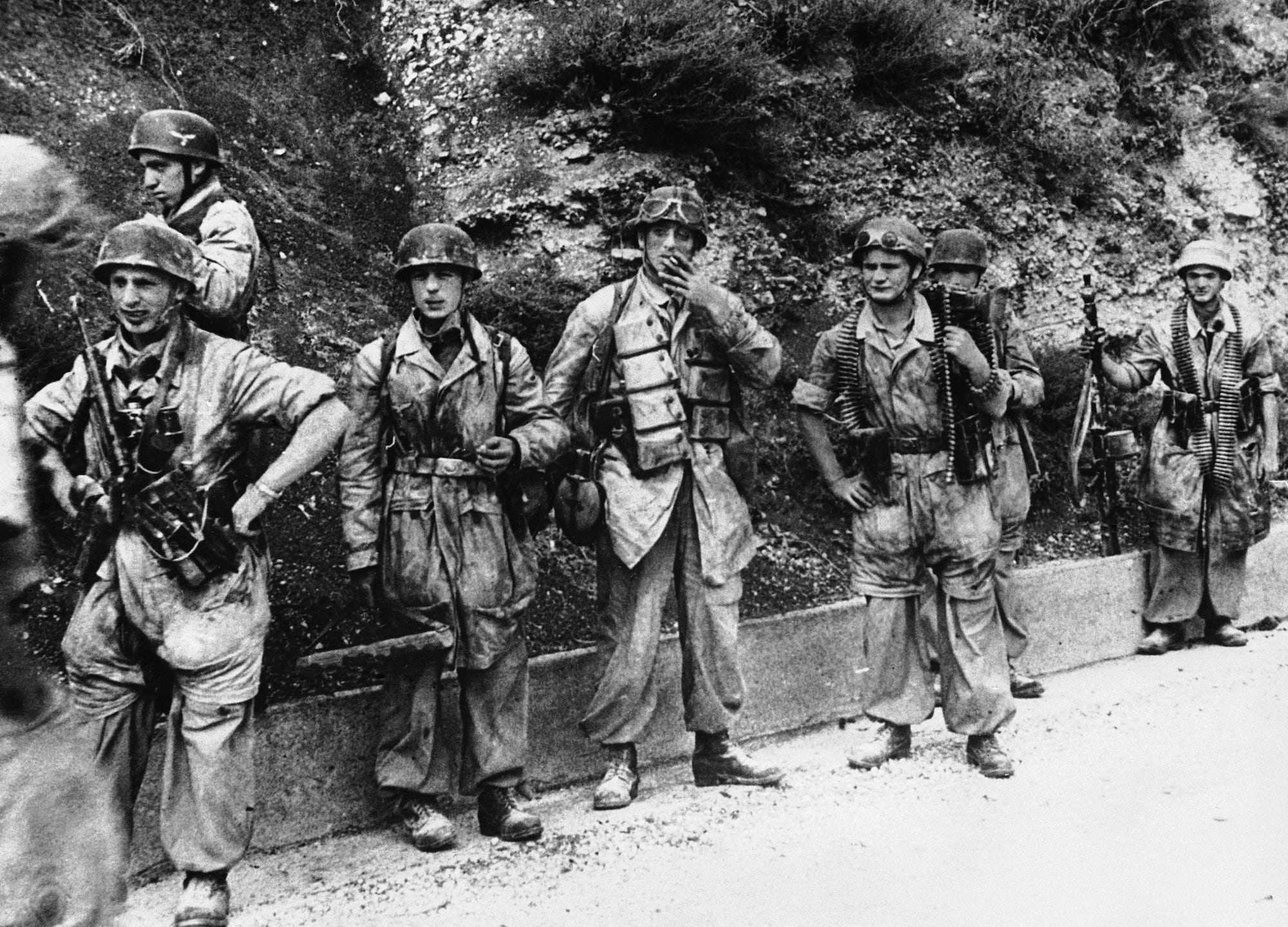
AP Photo
Fallschirmjägers continued fighting after Crete. They conducted a number of smaller jumps around Europe, including as part of the Battle of the Bulge. For the most part, however, they were used as elite ground-based infantry.
Although they had lost the battle and inflicted heavy losses on the Fallschirmjägers, the Allies recognized the importance of paratroopers and invested heavily in perfecting the deployment of airborne infantry.
Allied airborne assaults were conducted on a much larger scale, usually in conjunction with a larger ground or amphibious assaults that paratroopers could link up with. American and British paratroopers also had much better parachutes and jumped fully equipped for battle.
The superiority of Allied paratroopers was demonstrated on D-Day in June 1944, when over 18,000 paratroopers jumped behind enemy lines in Normandy. Despite being scattered and confused after the jump, and without much of their equipment, groups of paratroopers were able to regroup and accomplish many of their objectives.
